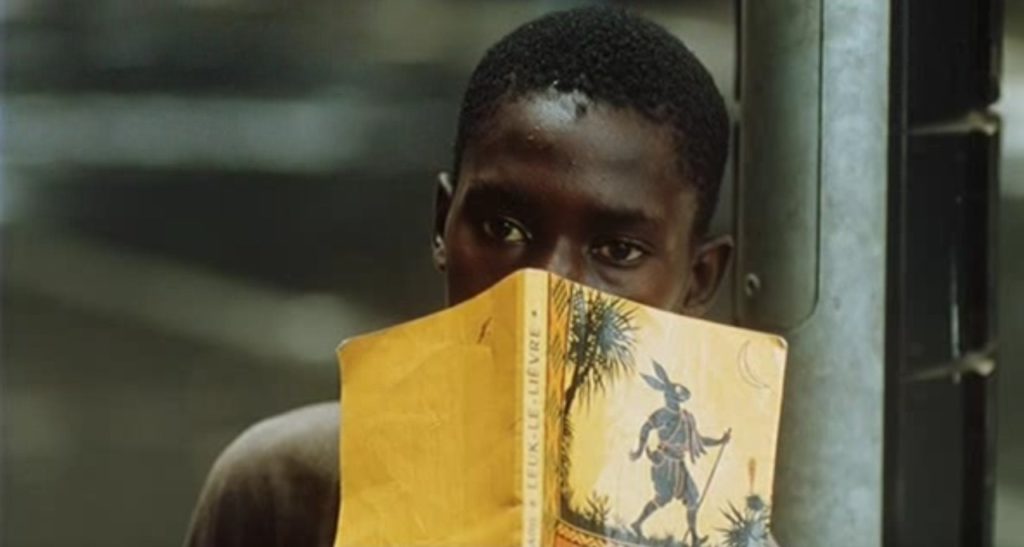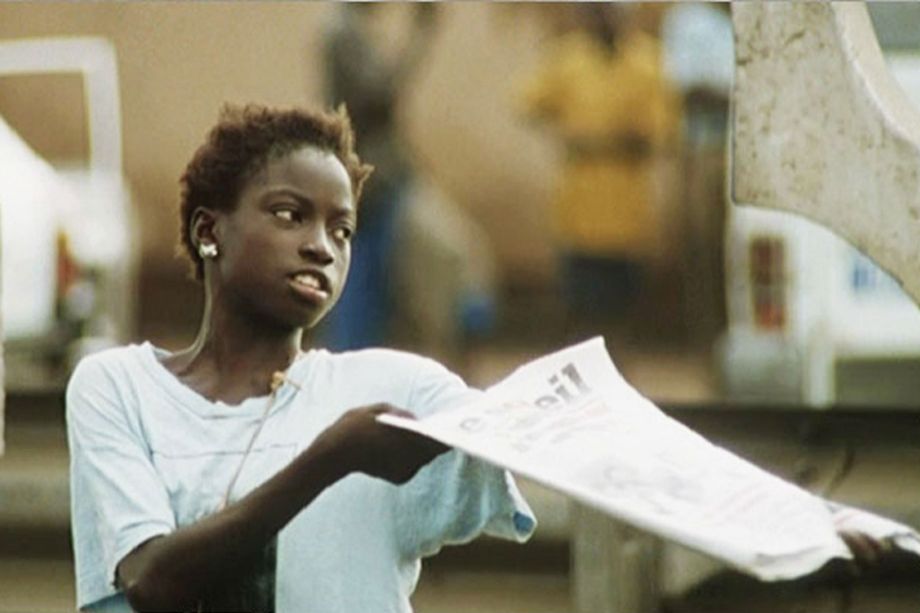A film that is twenty years old yet just receiving its UK premiere this year, Djibril Diop Mambéty’s The Little Girl Who Sold the Sun (1998) has just received a restoration from the Institut Français. This restoration played in the UK for the first time at the Berwick Film and Media Arts Festival earlier this month. If the synopsis makes it sound like a bleak and unforgiving affair, do not be fooled. Mambéty’s final film is brimming with colour and optimism, carried through by a central character blessed with ferocious resilience and executed with a glorious eye for detail.

The film follows Sili (Lissa Balera), a polio-ridden little girl in Dakar, who decides that she is going to sell newspapers so that she can support her blind grandmother. Fitting, then, that the paper she is selling is called The Sun – she is selling and giving out rays of hope to the rest of the world, so unburdened by disappointment, nor thwarted by her circumstances. This sensational hopefulness defines the film, fittingly for one made just before the millenium clicked over. It would be easy to label the film as overly naive, but it is this breeziness that makes The Little Girl Who Sold the Sun such a compelling watch. For modern times burdened with pessimism, the unapologetic aspiration of this short feature is awe inspiring.
Balera has such a starring role. Her calm sincerity and confidence is a stark contrast to the crass showmanship of the boys around her. Balera gives a magnificent performance characterised by emotion and confidence. The backdrop to this determined journey is a kaleidoscope of vibrant, bright colours, Mambéty seemingly unwilling to sacrifice a single detail. Mambéty contains so much activity and colour into a single frame, the rich texture of life captured in a dazzling manner – life complete with imperfections, but not defined by them. The result is such a rich film that does not ignore reality, but rather wants to improve it.

The story features some golden moments. Sili giving a police officer a firm talking to is a particular highlight, as is seeing her giving money away to other children begging in the street. Mambéty covers a lot in the 45 minute running time, yet the film never feels overstretched. You do wish that it was longer, but only so you can lose yourself in the film’s vibrancy for that little bit longer. It is a testament to the strength of the story that you feel so immersed and engaged in a tale that will stay with you for a length of time that betrays the few minutes of your life that it will take.
A gem of African cinema, The Little Girl Who Sold the Sun is an uplifting and expertly crafted short feature that leaves you feeling hopeful of a brighter tomorrow. Quietly extraordinary and thematically still relevant, Mambéty’s final film will live on for a long time as a testament to courage and aspiration. This was a much needed antidote twenty years ago, and its strength has only increased over time. An essential classic of world cinema.
